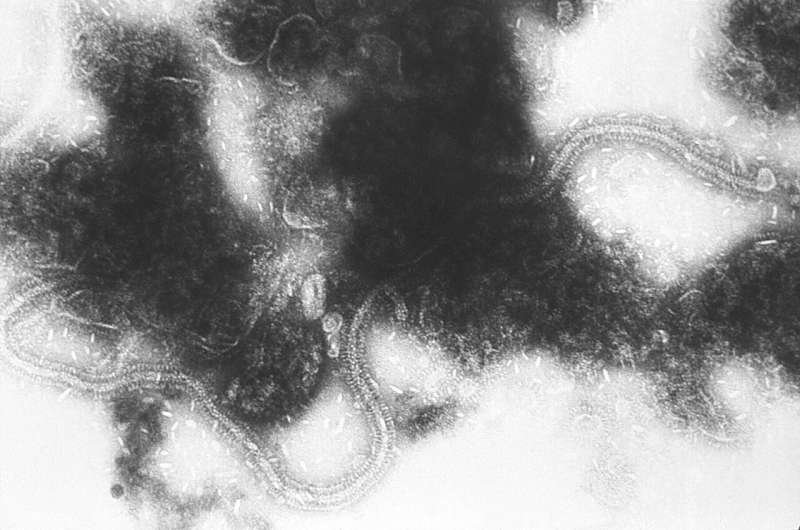This article has been reviewed according to Science X's editorial process and policies. Editors have highlighted the following attributes while ensuring the content's credibility:
fact-checked
peer-reviewed publication
trusted source
proofread
RSV shown to infect nerve cells, cause inflammation and damage

Respiratory syncytial virus (RSV), a common infection in children and senior adults, can also infect nerve cells and trigger inflammation leading to nerve damage, according to a new Tulane University study.
RSV can cause mild symptoms such as coughing, sneezing and fever or lead to more severe conditions such as pneumonia or bronchiolitis. But since the disease was first discovered in 1956, it has been thought to only infect the respiratory tract.
This study, published in The Journal of Infectious Diseases, is the first to prove that RSV can penetrate nerve cells. It may provide the clearest link between RSV and reported neurological symptoms in children.
RSV has been previously detected in the spinal fluid of children with seizures. Additionally, 40% of RSV-positive children under the age of 2 have shown acute encephalopathy, brain damage that can result in confusion, memory loss or cognitive difficulties.
The findings underscore the potential long-term impacts of the disease, as well as the importance of preventative measures such as the two RSV vaccines approved by the FDA in 2023.
"This is the most common respiratory virus in the first years of life as well as an impactful virus among the elderly," said Dr. Giovanni Piedimonte, Tulane University vice president for research and professor of pediatrics, biochemistry and molecular biology. "This adds a new dimension to the importance of RSV vaccines for both the elderly and mothers to protect their babies."
Researchers studied the virus using 3D peripheral nerve cultures grown from stem cells and rat embryos. After finding that they can be infected by RSV, researchers found that RSV induced the release of chemokines—proteins that fight infections by controlling immune cells—and caused significant inflammation.
With low levels of RSV infection, the nerves became hyperreactive to stimulation. At higher levels, the team observed a progressive degeneration of the nerve and increased neurotoxicity due to excess inflammation.
"Until this study, the theory was that the inflammatory response was indirectly activating the nerves," Piedimonte said. "This study shows that not only does that happen, but the virus can penetrate directly into the nerves."
The nerve hyperreactivity could explain why children who get RSV are later more likely to have asthmatic symptoms, Piedimonte said.
The study also found that RSV could enter the spinal cord via peripheral nerves despite not having the ability to enter the spinal neurons directly. More research is needed to explore that mechanism, but Piedimonte theorizes that by using the peripheral nerves to enter the spinal cord, RSV can bypass the blood-brain barrier, enter the central nervous system and infect the brain.
If confirmed, it could signal a connection between RSV and other neurological or developmental disorders, Piedimonte said.
"If indeed it's confirmed in future studies that viruses like this are able to access the central nervous system, that opens a huge Pandora's box," Piedimonte said.
Co-authors on the study include Tulane University researchers Kevin Pollard, Vicki Traina-Dorge, Stephen Medearis, Alexander Bosak, Greg Bix and Michael Moore.
More information: Kevin J Pollard et al, Respiratory syncytial virus infects peripheral and spinal nerves and induces chemokine-mediated neuropathy, The Journal of Infectious Diseases (2023). DOI: 10.1093/infdis/jiad596




















